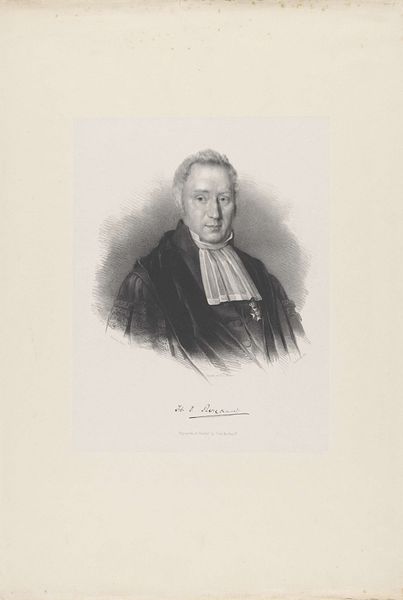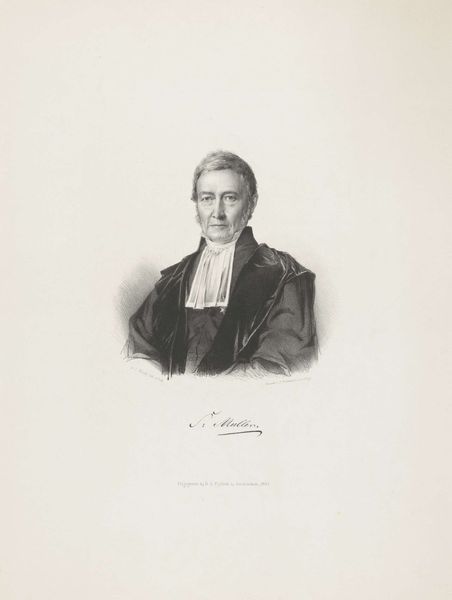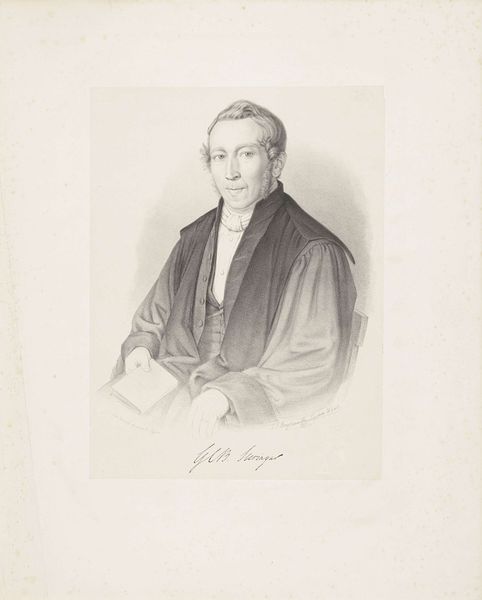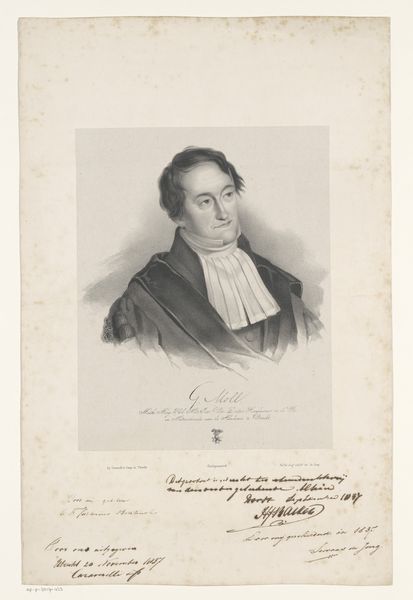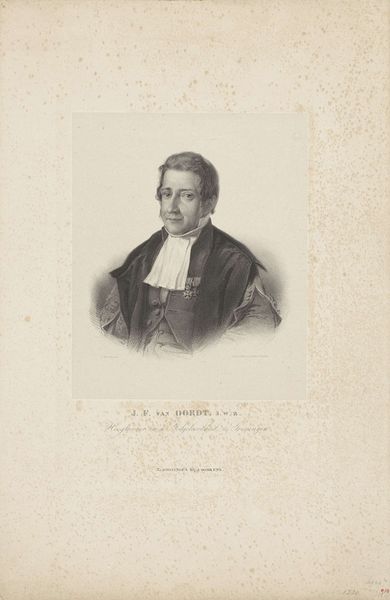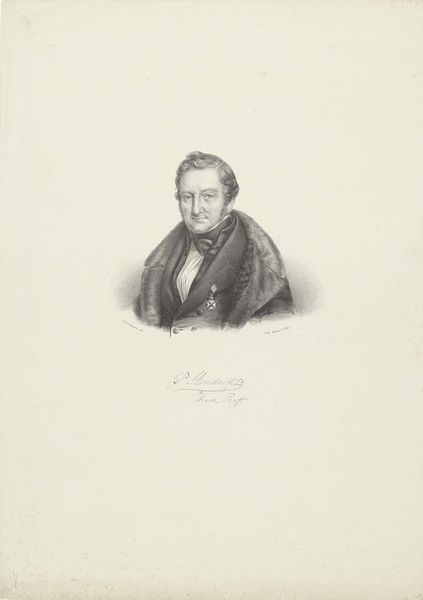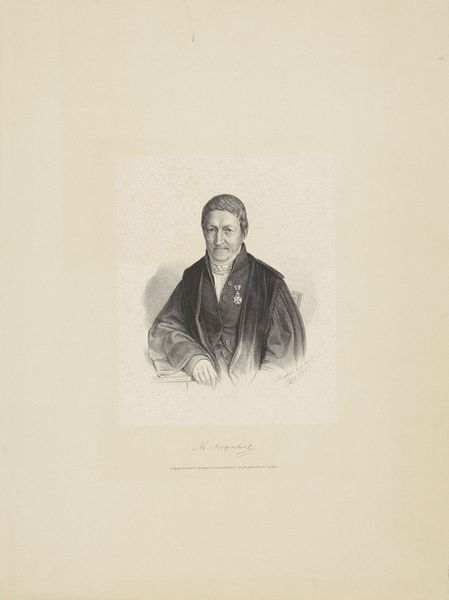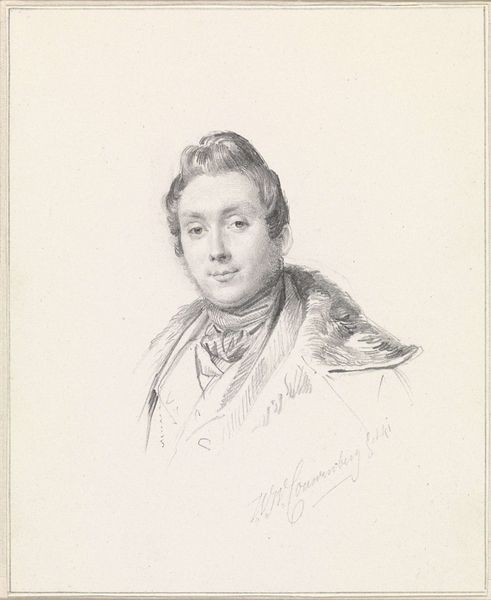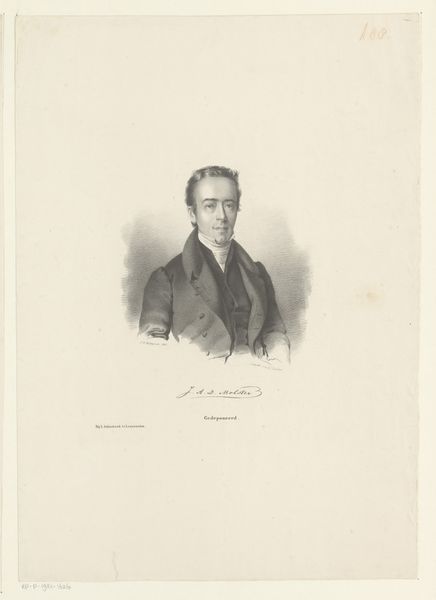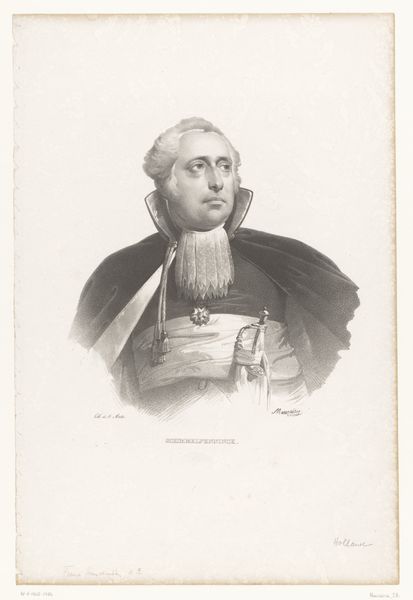
engraving
#
portrait
#
academic-art
#
engraving
#
realism
Dimensions: height 460 mm, width 327 mm
Copyright: Rijks Museum: Open Domain
This portrait of Johann Michael Franz Birnbaum was made with a lithographic stone, sometime in the early 19th century. Lithography is a printmaking process based on the simple principle that oil and water don't mix. First, an image is drawn onto a flat stone surface with a greasy substance. Then, the stone is treated with a chemical fixative and dampened with water, which the untreated areas absorb. When an oily ink is applied, it adheres only to the drawn image. Finally, paper is pressed against the stone to transfer the ink, creating a print. The appeal of lithography lies in its ability to capture the nuances of tone and detail, lending itself to the reproduction of drawings and paintings. Unlike the precision of engraving, lithography allowed for a more spontaneous and painterly effect. Here, we see how that process could translate into a compelling likeness, even at a time when photography was emerging to fulfill exactly that function. It reminds us that all images are constructed, whatever the medium.
Comments
No comments
Be the first to comment and join the conversation on the ultimate creative platform.
